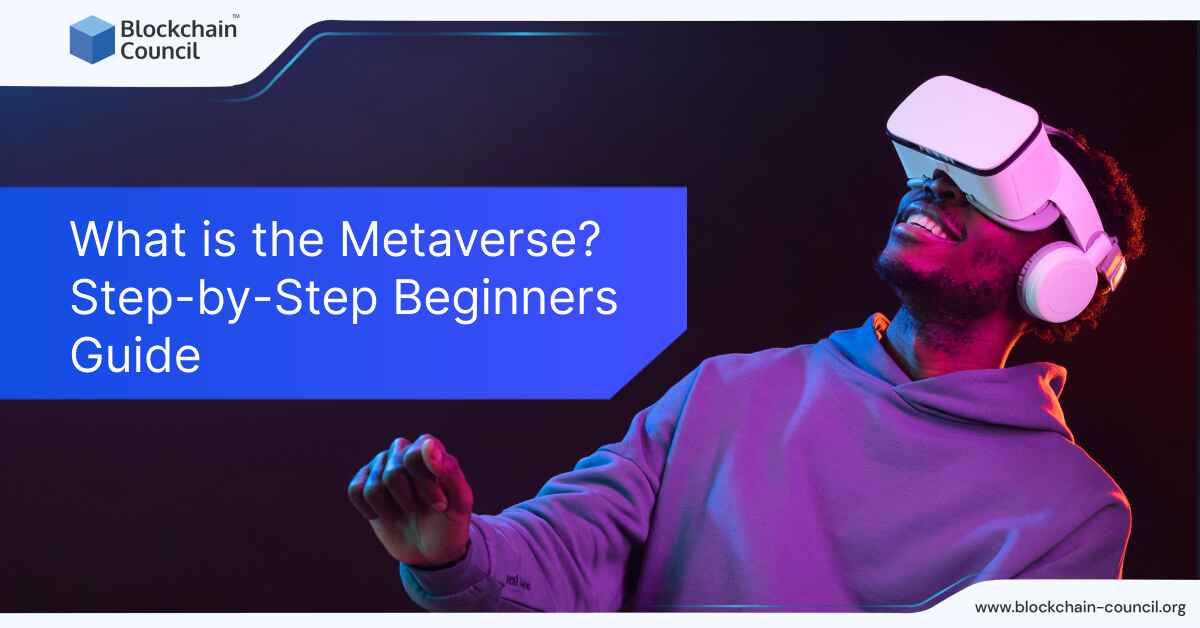
- Blockchain Council
- September 17, 2024
Summary:
- Metaverse is a shared or community-driven virtual environment for multiple activities that can be done online.
- Metaverse development involves 3D designing, VR, AR, MR, and Blockchain integration.
- Entering Metaverse is as easy as registering for Web 2.0 sites & exploration of these sites may or may not need hardware devices.
- Artificial intelligence, Gaming & real estate are driving the future of Metaverse.
- Metaverse is currently being incorporated into multiple projects to provide a better user experience before purchasing, like automobile experience, fashion experience, decorative experience, etc.
- Metaverse Jobs are increasing rapidly across the world with an active hunt for artists, XR developers, blockchain developers and project managers.
Since Facebook CEO Mark Zuckerberg announced the rebranding of Facebook Inc. to Meta Inc., the topic has piqued everyone’s interest. Meta Inc.’s Metaverse roadmap is evolving, and with the recent acquisition of 3D Smart Glasses Manufacture Luxexcel, the future looks brighter than ever. But what is it, and how does it relate to gaming, automobiles, real estate, and the entire industry investing in it?
What is the Metaverse? or What Does “Metaverse” Mean?
Metaverse is an online platform, seen as the next generation of the internet, where people can interact with each other like hanging out, playing games, doing business, participating in virtual events, face-to-face interaction using avatars, and much more with an immersive experience and sense of mixed reality. The Metaverse could also use augmented reality (AR) when digital information is added to the real world. In addition, financial items such as digital money or cryptocurrency can be used to generate transactions and trade digital items via Web3 modules. The Metaverse could also be experienced in a regular laptop/computer screen without any wearable devices.
A Comprehensive History of the Metaverse
The metaverse, a term coined by sci-fi writer and author Neal Stephenson in his 1992 novel Snow Crash, refers to “a communal virtual shared space created by the intersection of virtually enriched physical reality and physically ongoing virtual space, including the sum of all virtual platforms, augmented reality, and the internet.” But the concept of a virtual shared space dates back to the 1990s.
Want to quickly understand How To Become Metaverse Developer? Check the detailed article: How To Become Metaverse Developer: Scope, Skills, And Salary
The Origins of the Metaverse
The idea of virtual shared space is connected to the earliest forms of communication, including images and symbols to convey ideas and tell stories. As technology has advanced, so has our knowledge to create and interact with virtual platforms. One of the earliest examples of virtual shared space was the “Great Hall of People,” produced by MIT students in the 1960s. This primitive chat room allowed users to communicate and interact with one another in a virtual environment. In the 1970s and 1980s, virtual reality (VR) and augmented reality (AR) began to emerge as new technologies. VR provides users with an immersive experience in a virtual world, while AR enhances the physical world with digital elements. Both of these technologies laid the foundation for the development of the metaverse.
The Evolution of the Metaverse
As the internet became more accessible in the late 1990s and early 2000s, massively multiplayer online role-playing games (MMORPG) and virtual worlds such as Second Life and World of Warcraft boomed. These virtual environments or platforms allowed players to create avatars and interact with one another in a shared digital space.
The rise of social media and the increase of mobile devices in the 2010s further expanded the use cases of the metaverse. Augmented reality apps such as Pokemon Go, Instagram, and Snapchat filters brought the metaverse into the physical world. In contrast, virtual reality headsets and online multiplayer games continued to advance the technology.
For a detailed article on Best Metaverse Platforms, you can refer to 10 Best Metaverse Platforms
Importance of Metaverse
Metaverse has become a new trend in emerging technologies. AR, VR, MR, XR & other virtual-oriented platforms and devices have found use cases and a future roadmap to grow and mix reality better than ever.
- Improvement in User Interaction: From providing better support through virtual agents using avatars and building marketing elements through games, VR/AR Showrooms, or galleries, businesses can leverage the metaverse to generate new users & sustaining the market much better than their competitors.
- Corporate Events: It’s not uncommon to host business conferences, seminars, or “Webinars” on online platforms like LinkedIn, Facebook, Youtube, etc., But using the metaverse experience, you can create much more than just a tiny window video sharing, you can leverage the AR/VR for presentations, discussions & voting during these events.
- Better Advertisement Collaterals: Advertising in the metaverse will be very different, as it will allow interaction with an advertisement: 3D elements, dynamic ads, dynamic ad components & much more.
- E-commerce Experience: We have recently seen NFTs included in the brands like NIKE, PUMA, and more. With metaverse, users can try these products on their feet using AR and judge better. They are also increasing user engagement over a platform where users will be just testing the products for hours and generating advertisements & nudges opportunities for these brands.
- Teamwork and Project Management: Metaverse, as the shared platform, has the power to work as a community-driven tool allowing business teams to use it as a project management tool. Sharing documents, presentations, live meets, and discussions can create an immersive experience for the team increasing interactions & boosting productivity.
- Digital Transactions: Metaverse also has a use case in transactions or IoT requiring digital payments & remuneration. Integration of digital money can bring ease of payment & swiftly close a trade.
How Does Metaverse Work?
Metaverse is not a technology but a concept of virtual shared space. It is built upon multiple technologies, language and its working depends on what it will be used for. To understand it better, let’s check the different use cases & technologies used to build the same.
Virtual Experience:
To create a virtual environment for experiences like hosting events, games & social-interaction platforms, one needs to use 3D Designing and Web3 Development libraries like three.js, libp2p, light.js, web3j, web3.js, web3.py, and ethers.js. Choosing which library depends on the type of experience you want your users to offer. Three.js is the latest web3 development technology used by Web3 designers using Effects, Scenes, Cameras, Animations, Meshes, and Render performance monitoring.
Link: Learn the benefits of becoming a Three.js Developer or 3D Designer
Discovery:
Discovery tools like search engines can be built with extended services over the Metaverse allowing the searcher to interact with the result virtually and through augmented reality.
For Example: If you think of building a virtual platform providing real-time navigating directions and suggestions using your camera through pointing and marking landmarks. In a broad sense, spatial computing can be done using Geo-tagged tokens on Blockchain, OpenStreetMap (OSM) data points, and metaverse technology elements similar to 3d designing for augmented reality.
Commerce or FinTech:
The largest market share of Metaverse currently is the NFT Marketplaces, Metaverse Real Estate providers, Virtual Digital Assets Exchanges & Social Communities built to trade/showcase NFT or other digital items. Technologies used in these platforms are mostly react.js and react-native (for mobile applications) with a mix of Ethereum/solidity, Corda, and other Blockchain smart contracts to provide a seamless transaction experience. The technology required for the Metaverse is increasing daily, from buying land in the virtual environment to advertising and building showrooms for e-commerce platforms.
Metaverse does wonders for any industry and product that needs IoT exposure. Currently, all the technologies and computer languages are being used as a blend of items to provide the best Human Experience. In the coming years, we will see dedicated languages and products for development, defining the Metaverse working in a narrow sense. Until then, 3D Designing, Three.js Development, and platforms like Moralis.io rule the space.
Applications of the Metaverse
The potential applications or use cases of the metaverse are diverse and varied. Some industries and sectors that could potentially benefit from using the metaverse include
Education
The metaverse could provide an immersive and interactive learning experience for students, allowing them to visit virtual museums, participate in virtual field trips, and even attend virtual classes.
Entertainment
The metaverse could revolutionize the entertainment industry by providing a new platform for interactive experiences and events. This could include attending concerts or sports games from the comfort of your home or participating in virtual escape rooms with friends and family.
Business
The metaverse could also have significant implications for the business world, allowing companies to hold virtual meetings, trade shows, and other events. It could also provide a new platform for e-commerce and online marketing.
Healthcare
The metaverse could be used in the healthcare industry to facilitate virtual consultations and remote patient monitoring.
Real Estate
The metaverse could be used in the real estate industry to allow potential buyers to tour properties virtually and get a sense of what they are like before physically visiting them.
Tourism
The metaverse could also be used in the tourism industry to allow people to virtually visit and experience destinations before physically traveling there.
These are just a few examples of the many potential use cases for the metaverse. As technology evolves and develops, we will likely see even more innovative and creative applications for the metaverse.
For a detailed article on the 10 Metaverse Blockchain And Crypto Projects, you can refer to “Top 10 Metaverse Blockchain And Crypto Projects“
How To Enter the Metaverse?
There are several ways to enter and interact with the metaverse:
Virtual Reality (VR) Headset:
One of the most common ways to enter the metaverse is through a virtual reality headset. These headsets allow users to fully immerse themselves in a virtual environment and interact with it using their head movements and hand gestures.
Augmented Reality (AR) Device:
Augmented reality devices allow users to see virtual objects and information overlaid in the real world. These devices can be as simple as smartphones with AR apps or more advanced systems like smart glasses.
Computer or Console:
Some metaverse experiences can be accessed through a computer or gaming console, either with or without using a VR headset.
Web Browser:
Some metaverse experiences can be accessed through a web browser, allowing users to interact with the virtual world using a mouse and keyboard.
It’s important to note that the level of immersion and interaction will depend on the device used. VR headsets offer the most immersive experience, while accessing the metaverse through a web browser may be more limited. To learn more about the difference between the tools mentioned above or how they differ in experience, let’s know more about them.
Virtual Reality in Metaverse
Virtual Reality (VR) is a technology that allows users to immerse themselves in a computer-generated environment fully. In the context of the metaverse, VR can be used to enter and interact with virtual worlds and experiences.
There are several types of VR systems, including:
Standalone VR Headsets:
Standalone VR headsets are self-contained units that do not require a separate computer or gaming console. These devices are typically less potent than PC-based VR systems but offer a more portable and convenient option.
PC-Based VR Headsets:
PC-based VR systems require a powerful computer to run and can offer a more immersive and high-quality VR experience. These systems may require external sensors or cameras to track the user’s movements.
Console-Based VR Systems:
Some gaming consoles, such as the PlayStation 5, offer VR capabilities. These systems typically provide a less powerful VR experience than PC-based systems but may be more accessible and convenient for some users.
Users must purchase and set up a VR headset and any required peripherals to use them in the metaverse. They will then be able to access and interact with virtual worlds and experiences through the headset.
Augmented Reality in Metaverse
Augmented reality (AR) is a technology that allows users to see virtual objects and information overlaid in the real world. In the context of the metaverse, AR can enhance the real world with virtual elements or provide information about virtual objects and experiences.
There are several AR devices, including
Smartphones and Tablets:
Many smartphones and tablets now have AR capabilities, which can be accessed through apps or built-in features. These devices use the camera to capture the natural world and display virtual elements on top of it.
Smart Glasses:
Smart glasses are wearable devices that can display virtual elements in the user’s field of vision. These devices may also have other features, such as voice recognition and gesture control.
Head-Mounted Displays (HMDs):
Head-mounted displays can be worn on the head and display virtual elements in the user’s field of vision. These devices may be standalone or require a connection to a separate device to operate.
Users must purchase and set up an AR device and any peripherals necessary to use AR in the metaverse. They will then be able to access and interact with augmented reality experiences through the device.
Mixed Reality in Metaverse
Mixed reality (MR) refers to technology that allows users to experience a blend of virtual and real-world elements in a single environment. In the context of the metaverse, mixed reality refers to the use of MR technology to create immersive experiences within the virtual world. This could include virtual objects that users can interact with as if they were real or virtual environments that users can explore and navigate as if they were physically present. The use of mixed reality in the metaverse allows for a more immersive and interactive experience and has the potential to revolutionize the way we interact with the virtual world.
Holograms & 3D Modeling in Metaverse
Holograms are three-dimensional projections that use lasers or other technologies to create the illusion of a physical object or environment. In the context of the metaverse, holograms could be used to create immersive, interactive experiences within the virtual world. For example, holograms could create virtual environments where users can explore and interact as if they were physically present.
3D modeling, on the other hand, refers to creating a digital representation of a three-dimensional object or environment. In the metaverse, 3D modeling could be used to create virtual objects and environments that users can interact with. These models could be created using specialized software, including textures, lighting, and animations, to create a more realistic and immersive experience.
Artificial Intelligence in Metaverse
Artificial intelligence (AI) has the potential to play a significant role in the metaverse, as it can be used to create more immersive and interactive experiences within the virtual world.
One way that AI could be used in the metaverse is by creating virtual assistants or other intelligent agents that can interact with users in a natural, human-like manner. These agents could provide information, answer questions, or perform tasks within the virtual world.
AI could also create more realistic and dynamic virtual environments within the metaverse. For example, With the latest OpenAI ChatGPT using GPT3 NLP Module, AI could simulate the behavior of virtual characters or animals or create virtual environments that change and evolve based on user actions or other stimuli.
Gaming in Metaverse
The metaverse system integrates various technologies, including virtual reality (VR), augmented reality (AR), social networking, and cryptocurrency, to allow users to engage digitally in a virtual world. This virtual world is represented by avatars, digital representations of users’ identities.
The metaverse changes gaming by creating a more natural world where users can quickly move their virtual items and identities from one digital world to another. Blockchain technology and non-fungible tokens (NFTs) in the metaverse allow gamers to earn real money through their in-game activities.
Gaming will lead us to the metaverse, which is a virtual world that combines elements of virtual reality, augmented reality, and the real world. This could potentially be achieved through the use of VR headsets and other technologies that allow users to immerse themselves in the virtual world fully.
Real Estate in Metaverse
Some brokers are already selling luxury real estate plots in the Metaverse, a virtual world of interconnected digital environments. These plots of virtual land have value and can increase in value based on demand, similar to traditional real estate.
Metaverse real estate, also known as digital or virtual real estate, is comprised of parcels of land in a virtual, interactive world. These parcels can be bought and sold using cryptocurrencies, often as investments. Metaverse real estate is part of the larger metaverse, a collection of online virtual worlds.
Buyers can make purchases of metaverse land directly from platforms such as Decentraland and CryptoVoxels. Sales and ownership of metaverse real estate are recorded through the transfer of non-fungible tokens (NFTs), which are unique digital assets representing ownership of a specific item or support.
Want to know the difference between Metaverse and Virtual Reality? You can check out our Metaverse Vs. Virtual Reality article for a quick overview.
Metaverse Companies & Projects
The metaverse is rapidly becoming a major part of the tech landscape, with companies big and small investing in virtual reality, augmented reality, and other immersive technologies. This article will look at some of the top metaverse companies in 2022.
Magic Leap: Magic Leap is a pioneer in augmented reality, focusing on creating highly realistic and immersive experiences. The company’s proprietary technology, called Digital Lightfield, allows for the projection of 3D imagery onto the natural world in a way that is almost indistinguishable from reality.
Magic Leap has received significant investment from companies like Google and Alibaba and has partnerships with AT&T and the NBA. The company is currently working on several exciting projects, including collaborating with Lucasfilm’s ILMxLAB to create Star Wars experiences in augmented reality.
Oculus: Oculus is a leader in virtual reality technology, with a range of products, including the Oculus Rift headset and the Oculus Quest standalone VR headset. The company was acquired by Facebook in 2014 and has since become a major player in the metaverse space.
One of Oculus’ standout projects is the creation of the VR experience “Ashes to Ashes,” which allows users to explore the life and work of artist Vincent van Gogh in a fully immersive virtual environment. Oculus is also working on other exciting projects, including a partnership with Marvel to create VR experiences based on popular superhero franchises.
Niantic: Niantic is behind the popular augmented reality game Pokémon Go and the Harry Potter: Wizards Unite and Ingress games. The company has a strong track record of creating engaging and innovative AR experiences and is sure to have more exciting projects.
Epic Games: Epic Games is perhaps best known for creating the hugely popular battle royale game Fortnite, but the company is also a significant player in the metaverse space. In addition to Fortnite, Epic is working on several other virtual and augmented reality projects, including creating a fully immersive virtual world called the Metaverse.
Unity Technologies: Unity Technologies is a leading provider of 3D game development tools and is widely used by developers in the metaverse space. The company’s platform allows for the creation of highly realistic and immersive virtual experiences and is used by companies like Oculus and Magic Leap to build their products.
Here are some of the other projects currently taking the Metaverse space by force
- High Fidelity
- VR Chat
- Mozilla Hubs
- Decentraland
- NeosVR
- VR World
- Horizon
- Somnium Space
- The Metaverse Roadmap
7 High-Paying Jobs in the Metaverse That You Should Know About
The metaverse is a rapidly growing industry, with many exciting job opportunities emerging as it expands. This section will delve into some of the most lucrative careers in the metaverse, all of which pay more than $125,000 annually.
Metaverse Developer
Metaverse developers are responsible for building and maintaining virtual worlds and experiences within the metaverse. They use programming languages such as C++ and Python to create interactive 3D environments and objects and may also work on integrating artificial intelligence and machine learning into their creations.
Virtual Reality Designer
Virtual reality designers are responsible for creating immersive, interactive experiences within the metaverse. They use specialized software such as Unity and Unreal Engine to build 3D environments and objects and may also work on integrating haptic feedback and other sensory elements into their designs.
Virtual Event Planner
As the metaverse continues to grow in popularity, there is an increasing demand for virtual event planners to organize and execute virtual conferences, workshops, and other events within virtual worlds. These professionals coordinate all aspects of the event, including scheduling, logistics, and promotion.
Virtual Reality Animator
Virtual reality animators are responsible for creating realistic movements and behaviors for virtual characters and objects within the metaverse. They use software such as Maya and Blender to design and animate 3D models and may also work on integrating AI and machine learning into their animations.
Metaverse Marketer
Metaverse marketers promote products, services, and experiences within the metaverse. They use a variety of tactics, such as social media marketing, content marketing, and influencer outreach, to reach and engage potential customers within virtual worlds.
Virtual Reality Writer
Virtual reality writers are responsible for creating compelling narratives and storylines within the metaverse. They may work on creating scripts for virtual reality games or on writing immersive experiences for virtual reality or augmented reality apps.
Virtual Reality Sound Designer
Virtual reality sound designers are responsible for creating and integrating audio elements into virtual reality experiences. They use specialized software such as Pro Tools and Logic Pro to design and implement sound effects, music, and other audio components and may also work on integrating haptic feedback and other sensory elements into their designs.
Future of Metaverse
The future of the metaverse is expected to be a major driving force in the global economy in the coming years as virtual and augmented reality technology becomes increasingly prevalent and sophisticated. The demand for skilled professionals who can design, develop, and manage virtual worlds and experiences is expected to be very high in the coming years, and those who possess the knowledge and skills to do so will be well-positioned to take advantage of this growth.
One way to gain the necessary knowledge and skills to succeed in the metaverse is to become a Certified Metaverse Expert (CME) through the Blockchain Council. The CME certification program is designed to provide professionals with a comprehensive understanding of the technologies and concepts that underlie the metaverse and the practical skills needed to design and develop virtual worlds and experiences.
Some of the benefits of becoming a CME include the following:
- Recognition as a knowledgeable and skilled professional in the field of metaverse development.
- Improved career prospects and opportunities in the rapidly growing metaverse industry.
- Increased credibility and standing within the professional community.
- Access to a network of like-minded professionals and experts in the field.
- Opportunities for professional development and continuing education.
- Overall, obtaining a CME certification from the Blockchain Council can be a valuable investment in your future as a professional in the metaverse industry.
FREQUENTLY ASKED QUESTIONS
What is the Metaverse?
Metaverse is an online platform, seen as the next generation of the internet, where people can interact with each other like hanging out, playing games, doing business, participating in virtual events, face-to-face interaction using avatars, and much more with an immersive experience and sense of mixed reality.
Importance of Metaverse
- The metaverse offers a new platform for social interaction and connection, allowing people to interact in virtual spaces in ways that may be more immersive and engaging than traditional online platforms.
- It has the potential to revolutionize industries such as entertainment, education, and commerce by providing new opportunities for content creation, distribution, and consumption.
- The metaverse can also serve as a powerful tool for innovation and collaboration, enabling people to work together on projects and share knowledge in ways that are not currently possible.
- The metaverse also has the potential to create new business models and revenue streams, such as virtual real estate, digital goods, and in-world advertising.
- It can open up new opportunities for remote work and virtual meetings, allowing people to work together and conduct business regardless of their physical location.
- The metaverse will also help in building a sustainable digital future, it will provide more efficient and sustainable ways of working, living and learning.
- It can also serve as a platform for social impact, enabling organizations and individuals to use virtual spaces to raise awareness and drive action on important global issues.
Use Cases of the Metaverse
- Virtual reality gaming and entertainment: The metaverse can be used to create immersive, interactive gaming and entertainment experiences.
- Social networking: The metaverse can be used to connect people from all over the world in virtual spaces, allowing them to socialize, collaborate, and share content.
- Education and training: The metaverse can be used to create virtual classrooms, training simulations, and other educational experiences.
- Business and commerce: The metaverse can be used to create virtual marketplaces, enabling companies to reach new customers and expand their reach.
- Healthcare: The metaverse can be used to create virtual therapy sessions, remote consultations, and other healthcare-related experiences.
- Public services: The metaverse can be used to create virtual government services, such as virtual town halls, and to improve communication and collaboration between government agencies.
- Scientific research: The metaverse can be used to create virtual labs, allowing scientists to collaborate and share data and resources in real-time.
- Smart cities: The metaverse can be used to create virtual city models that can be used for planning, simulation, and monitoring of smart cities.
- Creativity and art: The metaverse can be used to create virtual galleries, museums and other art-related experiences.
- Personal development: The metaverse can be used to create virtual self-help, meditation, and mindfulness sessions.
How To Enter the Metaverse?
- Virtual Reality (VR) headsets: These devices allow users to fully immerse themselves in the metaverse, giving them the ability to interact with virtual environments and objects as if they were real.
- Augmented Reality (AR) devices: These devices overlay virtual elements onto the real world, allowing users to interact with the metaverse in a more seamless and natural way.
- Voice and gesture controls: As the metaverse becomes more advanced, users will be able to interact with it using voice commands and gestures, similar to how they interact with smart home devices.
- Haptic feedback: Haptic feedback technology allows users to physically feel the sensation of interacting with virtual objects, making the experience more realistic and immersive.
- Social platforms: Social platforms like VRChat, Rec Room, and VR gaming communities are a great way to interact with other people in the metaverse, and to explore and create together.
- Virtual marketplaces: Virtual marketplaces like the virtual real estate marketplaces allow users to purchase or rent virtual properties or items in the metaverse.
- Blockchain: Blockchain technology can be used to create decentralized marketplaces and virtual economies in the metaverse, giving users more control over their virtual assets.
- Game engines: Game engines like Unity, Unreal Engine, and CryEngine allow developers to create interactive and immersive virtual worlds.
How do I start a career in the metaverse?
To start a career in the metaverse, it is important to have a good understanding of the technology and platforms that are being used to build and run virtual worlds. This includes knowledge of game engines such as Unity and Unreal, as well as programming languages such as C# and JavaScript. Additionally, experience in 3D modeling, animation, and digital art can be beneficial. Networking with other professionals in the field and staying current with the latest developments in the industry can also help to advance your career.
Another important aspect is to have an understanding of the use cases of metaverse and how to monetize them. Understanding the business and community building aspect of metaverse, would also be helpful.
Consider taking courses or earning a degree in computer science, game development, or a related field to gain the necessary technical skills. Building a portfolio of your work and gaining experience through internships or personal projects can also help to open up job opportunities in the metaverse industry.































































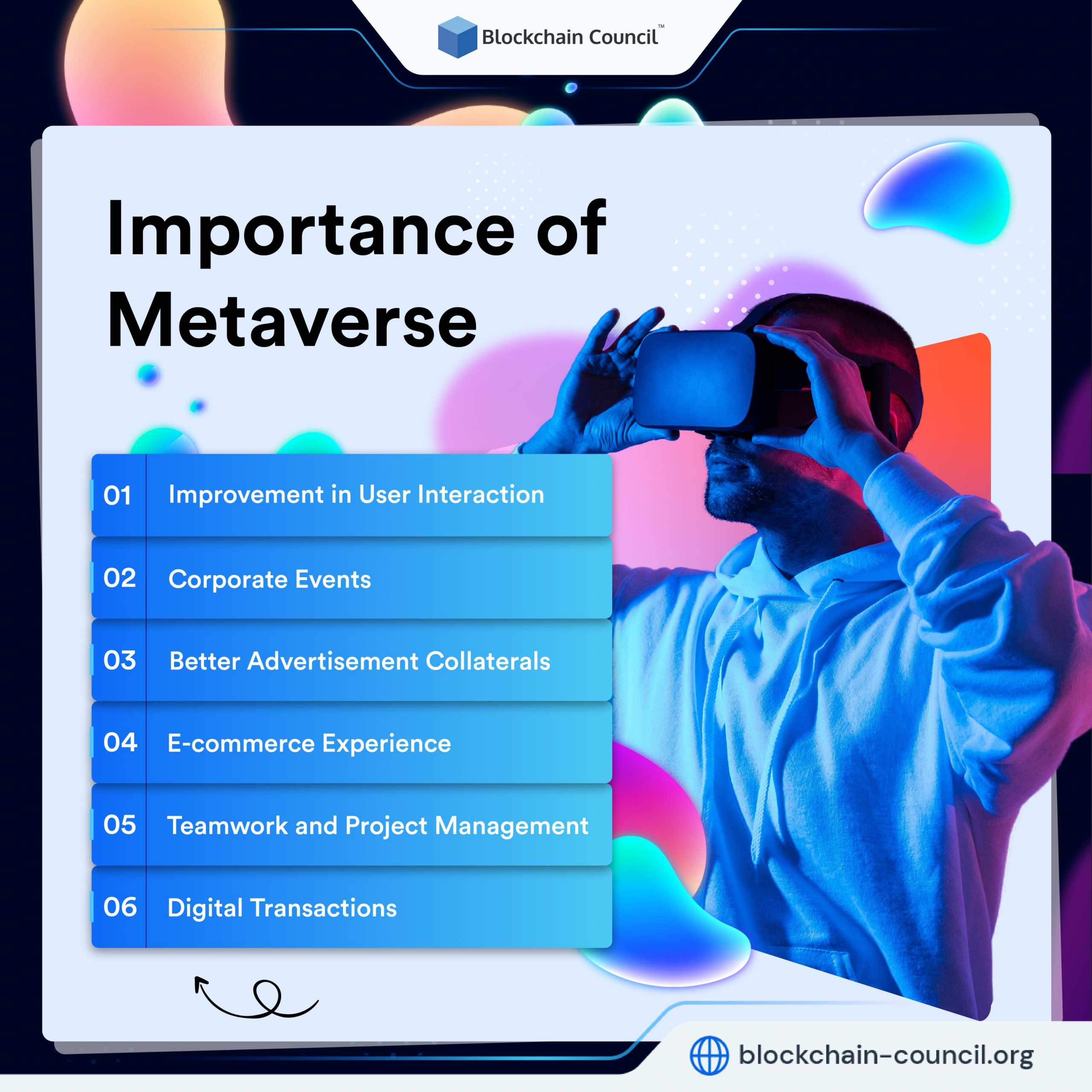
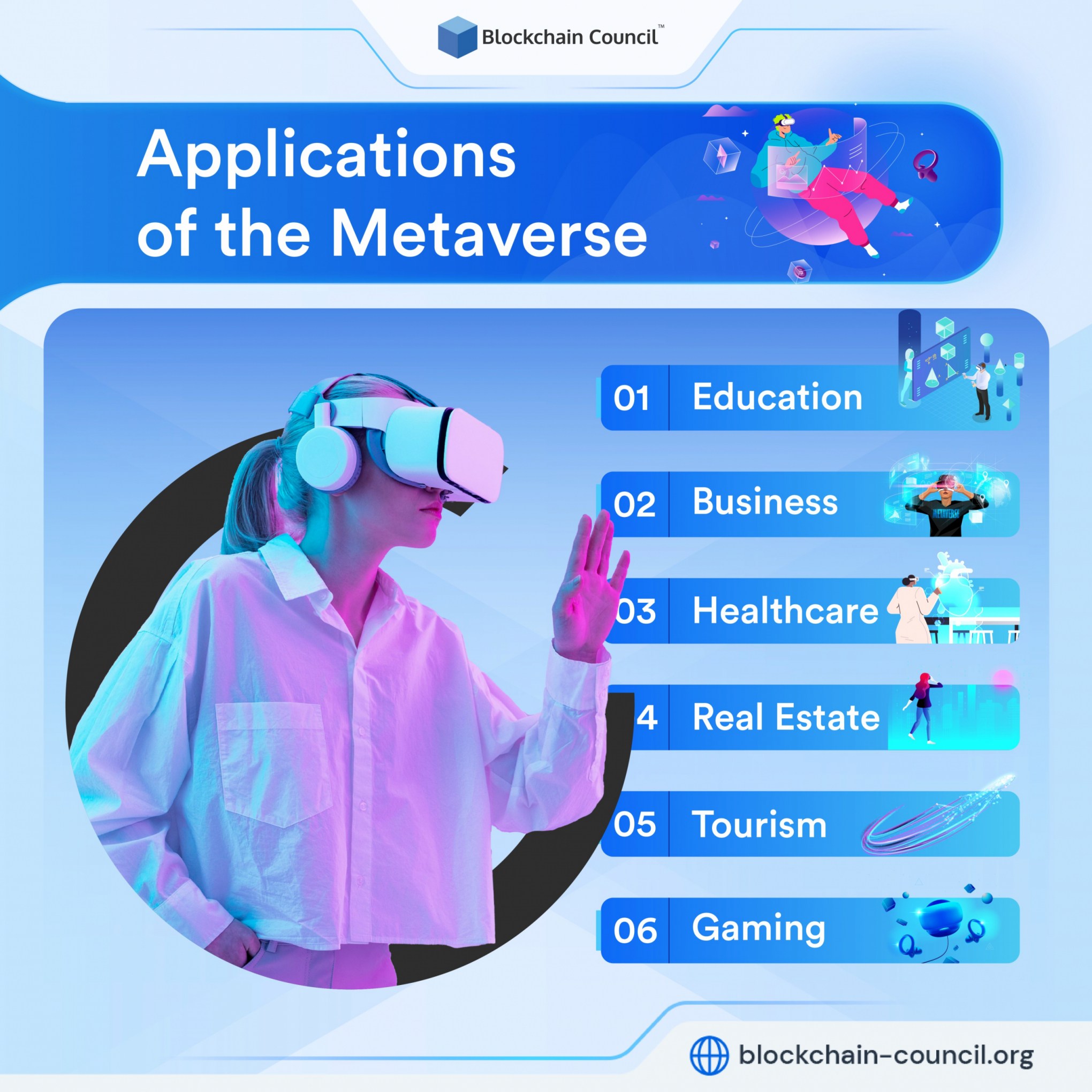
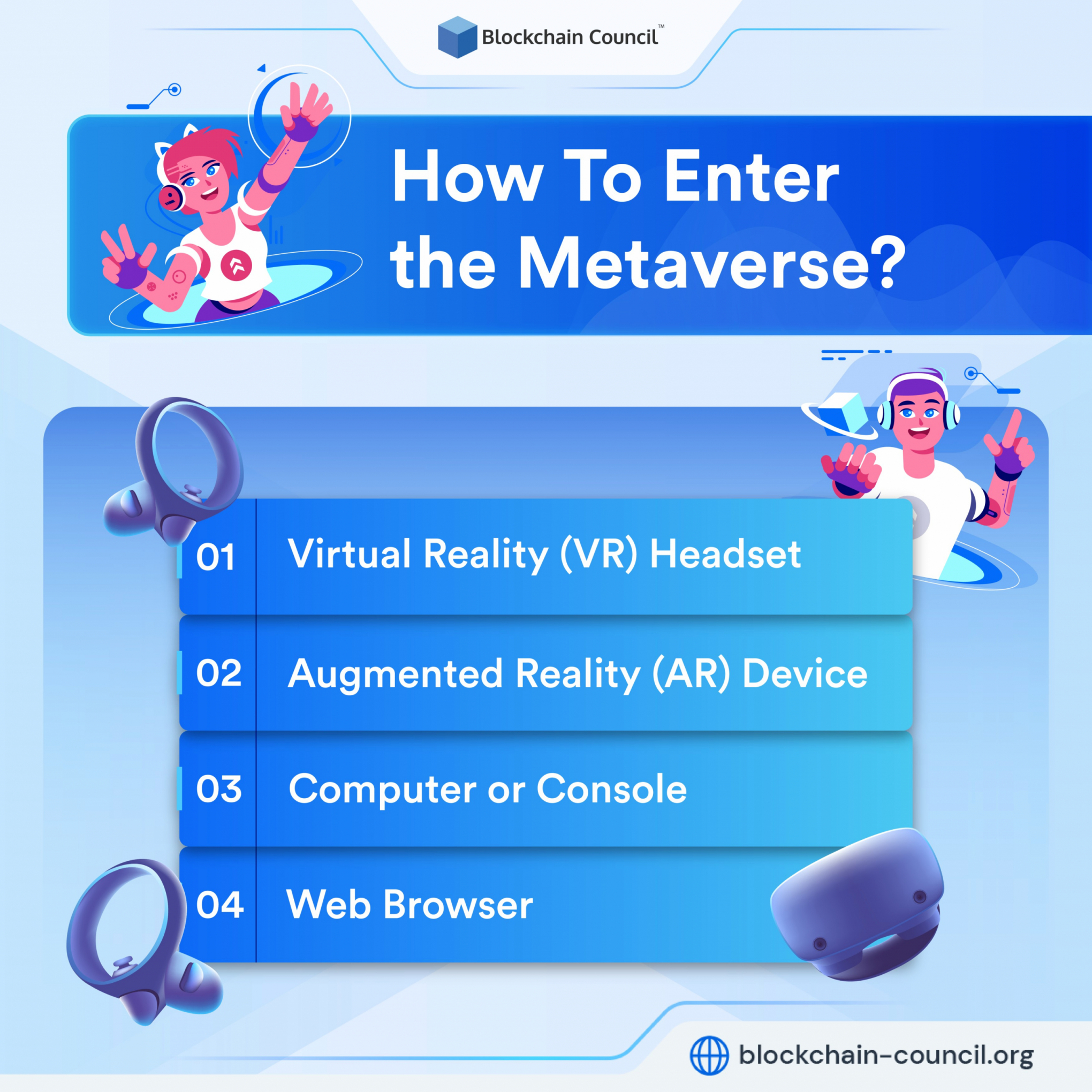

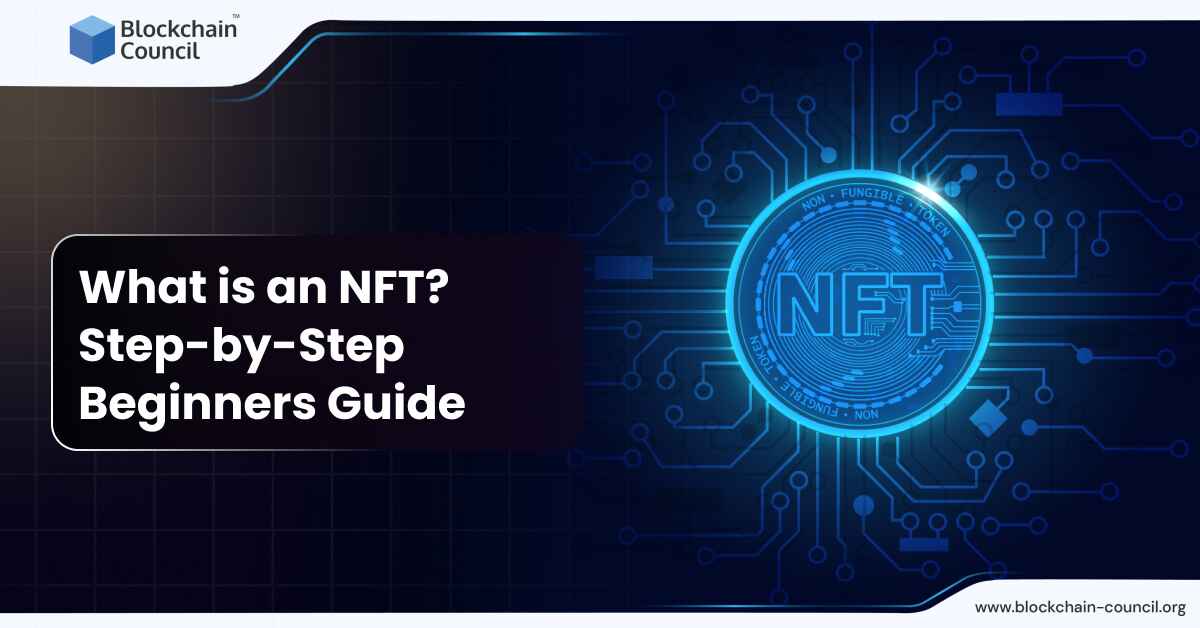
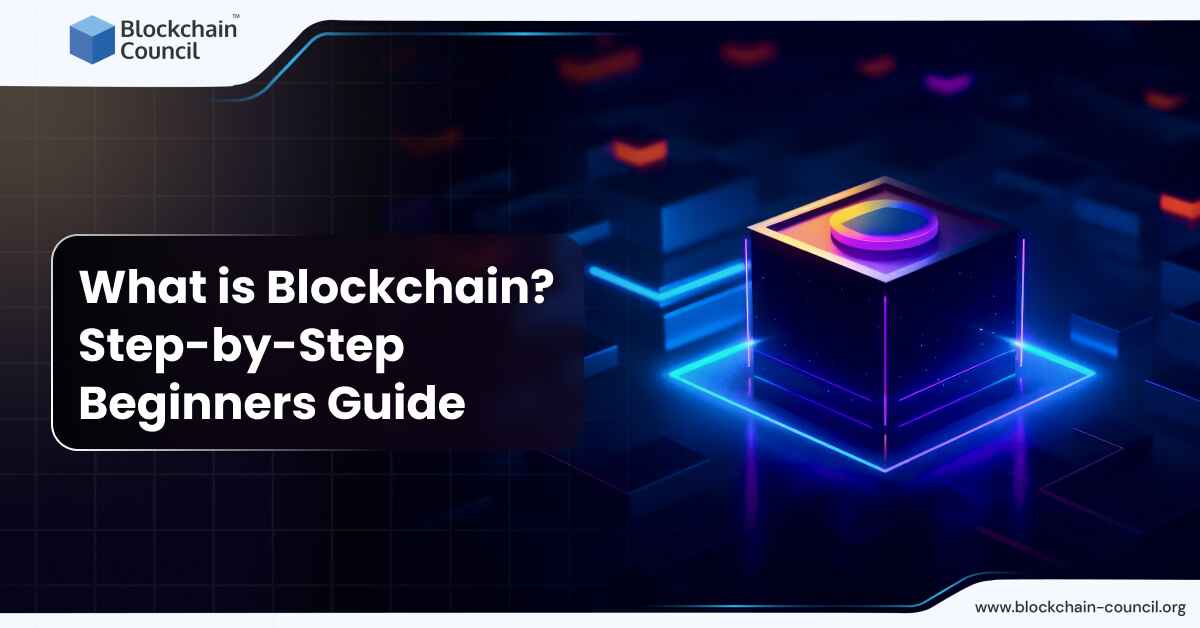

 Guides
Guides News
News Blockchain
Blockchain Cryptocurrency
& Digital Assets
Cryptocurrency
& Digital Assets Web3
Web3 Metaverse & NFTs
Metaverse & NFTs
